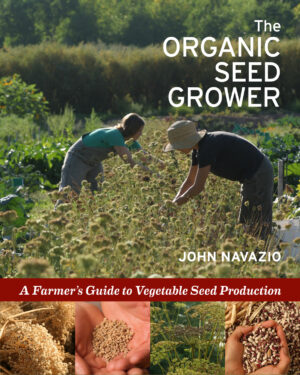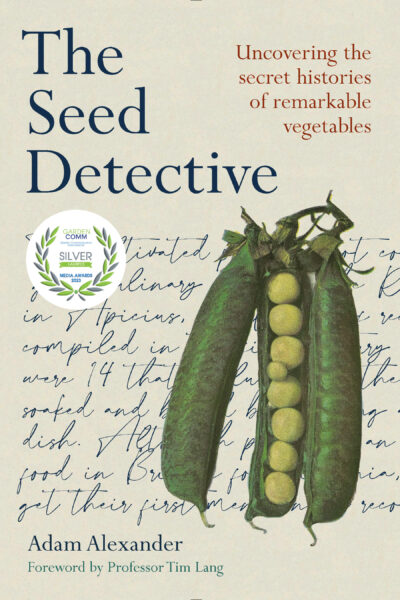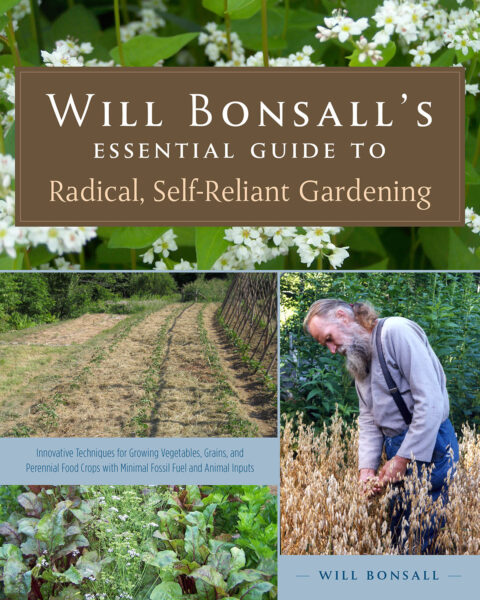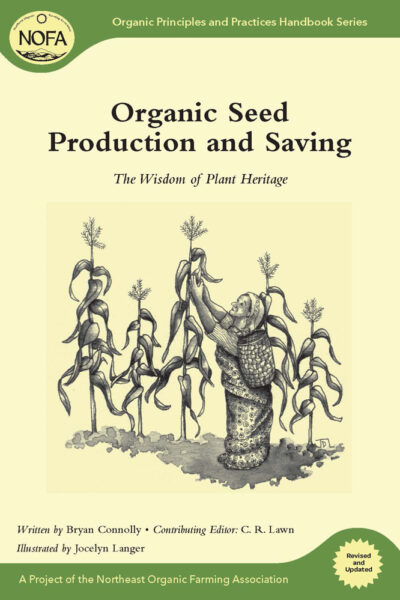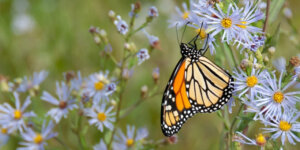Choosing the Right Seed Crop: The Seed Series
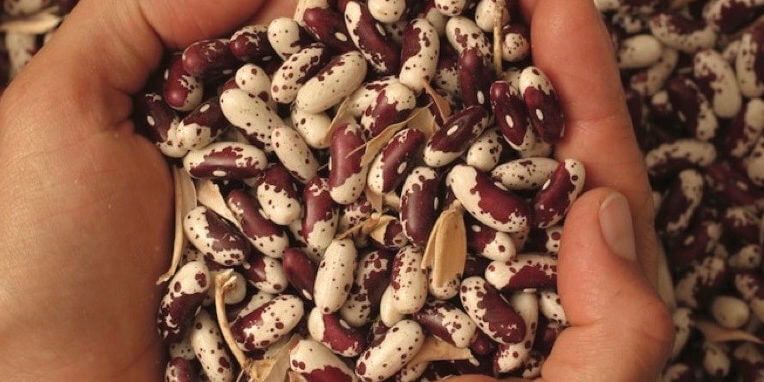
How do you know if you’re picking the right seeds? Here are some easy tips on choosing the best seed crop for your environment.
The following is an excerpt from The Organic Seed Grower by John Navazio. It has been adapted for the web.
Seed Crop Characteristics
There are a number of prominent characteristics of cultivated plants that are quite similar within the nine plant families in which most of our vegetable crops are found.
One of the first things someone researching our cultivated crop plants finds is that closely related crops within a particular family usually share a number of prominent features.
We know that different crops within the same family often share certain phenotypic traits, such as structural or reproductive characteristics.
Flower Structure
Flower structure has long been a principal way of categorizing plants into families.
The type and structure of the fruit, which is indeed a fertilized ovary of the flower, has also classically been used to assign different plants of the angiosperms (the true flowering plants) to various species and genera.
As to structural features, we all know that crop species in the same family usually share a common leaf type, arrangement of their leaves on the main stem, type of stem, and so forth.
Plant Structure
Plant structure can also be a reflection of the function of a particular part of the plant.
Certainly as you get to know the different crop members of a plant family you may begin to see more of the commonalities among these species.
This way of viewing crops can prove quite useful when you consider growing unfamiliar seed crops for the first time and realize that it is possible to culturally handle them in a similar fashion to a seed crop with which you have experience.
Categories for Choosing Seed Crops
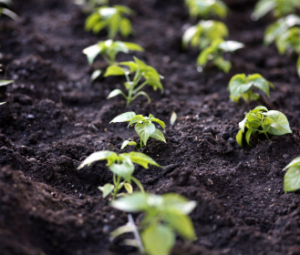 Here are a few categories in which crops within a particular family share traits that will help you decide whether the crop is suited to your environment:
Here are a few categories in which crops within a particular family share traits that will help you decide whether the crop is suited to your environment:
1. Evolutionary Past
- Center of origin. Is your climate similar to that of its evolutionary past?
- Climate. Is your climate similar to the climate where it’s currently grown?
- Structure and flower parts of the family definitely relate to shared ancestry.
2. Environment
Characterize the climate that the crop thrives in.
- Cool-season crops need cool weather to mature high-germination seed.
- Intermediate crops will grow in cool or warm climes and mature seed in warm conditions.
- Heat lovers need heat to thrive and produce high-germ seed.
3. Life Cycle
While some patterns exist across families, there are clearly families that contain annual/biennial/perennial species.
- Annuals complete their entire life cycle in one season.
- Winter annuals are planted for fall growth and flowering early in the next growing season.
- Biennials need most of two seasons to complete their life cycle, with vernalization between the first season of vegetative growth and the second season of reproductive growth.
- Perennials. This includes very few seed-propagated vegetable crops.
4. Daylength Sensitivity
Is the crop sensitive to day length?
- Daylength-sensitive crops only flower at certain daylengths.
- Daylength-neutral crops flower at various daylengths.
5. Reproductive Biology
Self-pollinated species versus cross-pollinated species.
- Cross-pollinated species. Is on-farm isolation possible?
- Wind-pollinated. Pollen travels far and doesn’t require insects.
- Insect-pollinated. Are pollinating insects present?
- Self-pollinated species. How many on-farm isolations are possible?
- Faithful selfers are highly self-pollinated; several crops are possible.
- Promiscuous selfers—how many isolations are possible?
6. Presence of Disease
Is disease a limiting factor in your environment?
- Diseases of the vegetative stage—is it a limiting factor?
- Seedborne diseases—are they endemic and economically limiting?
7. Presence of Insect Pests
Are insects a limiting factor in your environment?
- Insects of the vegetative stage—are these a limiting factor?
- Insects of the seed—are they endemic and economically limiting?
Climactic Zones
Here is a reference list of the four major climatic types in which vegetable seed crops are grown.
The important climatic considerations that determine each zone’s suitability are given, followed by the crops that are most well adapted to that particular zone.
Note that some crops are suited to more than one climate and therefore have a wider adaptation to environmental conditions for producing high quality.
Cool-Season Dry-Seeded Crops
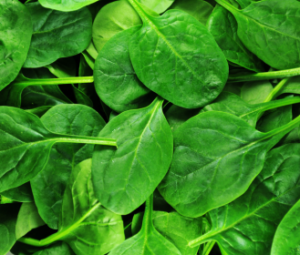 All dry-seeded crops are formed in dry pods or in clusters along the stem of the plant and are essentially harvested like grains.
All dry-seeded crops are formed in dry pods or in clusters along the stem of the plant and are essentially harvested like grains.
They produce the best quality seed when they mature and are harvested in seasonally dry, low-humidity regions; the so-called Mediterranean climate.
These cool-season, dry-seeded crops are best grown in the cooler reaches of the Mediterranean climate, where cool, often wet weather predominates during prolonged springs, and summers are mild and dry with little or no rainfall through harvest.
Cool-season crops do not handle hot weather, especially through the earliest stages of their reproductive cycle.
These crops form the highest quality seed when temperatures are generally somewhere between 60 and 75°F (16 to 24°C) during pollination, fertilization, and the earliest stages of embryo and endosperm development in late spring and early summer.
After this initial formation and development of the seed they are able to tolerate average summer daytime high temperatures between 75 and 85°F (24 to 29°C) but thrive in relatively cool summers, especially where daytime high temperatures rarely exceed 80°F (27°C) to produce the highest-quality seed.
Seed crops that excel under these conditions: Spinach, beet, cilantro, Asian greens, cabbage, cauliflower, kohlrabi, Chinese cabbage, parsnip, mustards, Swiss chard
Warm-Season Dry-Seeded Crop
This climate is similar to the Cool-Season Dry-Seeded parameters above but with temperatures that are consistently warmer throughout all the months of the growing season.
Warmer spring temperatures result in more rapid early growth and development for these crops over the cool-season dry-seeded crops.
Daytime high temperatures during flowering and seed setting should generally not exceed 78 to 85°F (26 to 29°C).
But after this initial formation and development of the seed these crops are able to routinely tolerate summer daytime average high temperatures between 85 and 92°F (29 to 33°C) when producing high-quality seed.
Seed crops that excel under these conditions: Broccoli, kale, collards, celery, radish, turnip, lettuce, Swiss chard, favas, peas, runner beans, parsley, endive, escarole, and chicories.
Hot-Season Dry-Seeded Crops
All dry-seeded crops do best when there is little or no rainfall during seed maturation and harvest.
This lessens the incidence of diseases of all kinds, especially seedborne diseases, and it lowers the threat of excessive rainfall shattering the seedheads that form with all dry-seeded crops.
While summer highs do regularly exceed 92°F (33°C), a number of these crops must complete their early reproductive stages of pollination and anthesis to mature a high-germinating, high-quality seed crop, while early season daytime temperatures are between 80 and 92°F (27 and 33°C).
Crops that excel under these conditions: Garden beans, lima beans, edamame, carrot, onion, and sweet corn.
Hot-Season Wet-Seeded Crops
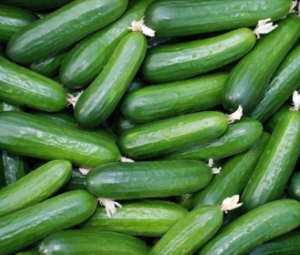 The wet-seeded moniker refers both to the fact that most of the fruit of these crops is wet but also to the method used to extract the fruit, which is extracted through a wet fermentation or a series of water rinses (see Seed Harvest for each individual crop).
The wet-seeded moniker refers both to the fact that most of the fruit of these crops is wet but also to the method used to extract the fruit, which is extracted through a wet fermentation or a series of water rinses (see Seed Harvest for each individual crop).
These crops are all heat lovers from the moment they are planted.
They depend on warm spring temperatures that average above 65°F (18°C), to establish good early growth and need warm nighttime temperatures to realize a decent yield and mature a high-germinating, high-quality seed crop.
Temperatures may routinely exceed 90°F (32°C) during flowering and early fruit and seed set,* and unlike the dry-seeded crops, some humidity is tolerated; in fact, the presence of humidity often is responsible for holding the heat into the evening and nighttime hours.
Crops that excel under these conditions: Cucumbers, melons, watermelons, summer squash, winter squash, bitter melon, eggplant, peppers, and tomatoes. (*The exception for this group is cucumber, which does prefer slightly cooler temperatures.)
Recommended Reads
Recent Articles
For too long, bugs have had a negative connotation associated with them. But what if we took the time to observe the benefits of insects? It’s time to rebug our gardens, lawns, and parks! The following is an excerpt from Rebugging the Planet by Vicki Hird. It has been adapted for the web. Adding Bugs:…
Read MoreAsparagus is a delicious vegetable with a layered history. How did this aspiring spear make its way from growing in the wild to appearing on our plates? The following is an excerpt from the The Seed Detective by Adam Alexander. It has been adapted for the web. “Nature gives us the key to every secret…
Read MoreInterested in growing trees? Here are some tips on successfully planting, transplanting, and pruning trees to create a flourishing forest garden! The following is an excerpt from The Home-Scale Forest Garden by Dani Baker. It has been adapted for the web. Planting Potted Trees and Shrubs If you order potted trees, check with your supplier to…
Read MoreChances are, you’ve seen cattails growing on the edge of your local lake or stream at least once or twice. Instead of just passing these plants, try foraging for and cooking them to create delicious seasonal dishes! The following excerpt is from The New Wildcrafted Cuisine by Pascal Baudar. It has been adapted for the…
Read MoreWith the right strategies and practices, composting on a small farm is surprisingly easy and inexpensive. Just follow these steps for making compost, and your farm will be thriving in no time! The following excerpt is from The Lean Farm Guide to Growing Vegetables by Ben Hartman. It has been adapted for the web. (All photographs by Ben…
Read More

